Pest Control Operators are often asked about a small, slow-moving seed-like “bug” on the walls of houses, garages, store rooms and other structures. These are mostly attributable to the plaster bagworm, or more correctly, the household casebearer. This is a typical case where common names lead to mistaken identity. Bagworms are moths in the family Psychidae in which the larvae or caterpillars build “bags” consisting of sticks, twigs or leaves on the outside, bound by silk on the inside, and are often found in trees where they feed on the leaves. The household casebearer case is reminiscent of a sweetmelon seed in size and shape. In South Africa the wattle bagworm is sometimes encountered as a pest in wattle plantations where it defoliates trees. A number of pyrethroid insecticides are registered for wattle bagworm control and are often applied aerially.
The household casebearer is a small moth in the family Tineidae. The adult moths are grey/brown in colour and inconspicuous, and about 5 mm long, with a wingspan of about 10 mm. This is a cosmopolitan pest, adults lay eggs mostly at the junction of a floor/wall in the cracks and crevices. The hatched larvae feed on mostly spider webs and other debris and organic matter at the floor/wall junction, often in crevices, under carpet edges etc. The larval case is made of silk, and is camouflaged by the addition of dust and other particles on the outside (Arakelian, 2010, Cranshaw, 2011, Heppner, 2005, Villanueva-Jiminez and Fasulo, 2010).
The casebearer larvae only becomes noticed once the larvae, with the case, starts crawling up the wall in search of a place to pupate. The casebearer case looks like a small flat seed constructed of dirt, and is spindle shaped.
Figure 1. Hosehold casebearer climbing up a wall.
Figure 2. The millimetre scale gives an indication of the size of the case.
Figure 3. Case attached to a wall. In this case the moth has already eclosed (emerged) from the pupa and flown away. The brown bit sticking out the bottom of the case is the empty pupal “skin”.
Figure 4. Enlarged photo of the pupal case showing the bits of debris, sand grains etc. of which the case is constructed.
Figure 5. A household casebearer larva that has been removed from its case. The typical Lepidoptera larva (caterpillar) body can be clearly seen.
Figure 6. A number of household casebearers on a wall in a seldom used storeroom.
Sanitation is the best control method for the plaster casebearer. If floor/wall interfaces are kept clean, swept or vacuumed regularly the likelihood of an infestation is very small. There does not seem to be much point in applying insecticide sprays to these areas specifically for casebearer control. Insecticides applied to these areas to control other insect pests will in all likelihood control plaster casebearer larvae. There are no insecticides registered for their control in South Africa.
References
ARAKELIAN, G. 2010. Plaster bagworm (Phereoeca praecox). County of Los Angeles.
CRANSHAW, W. 2011. A review of nuisance invader household pests in the United States. American Entomologist, 57, 165-169.
HEPPNER, J. B. 2005. Notes on the plaster bagworm, Phereoeca uterella, in Florida (Lepidoptera: Tineidae). Holarctic Lepidoptera, 10, 31-32.
VILLANUEVA-JIMINEZ, J. A. & FASULO, T. R. 2010. Household casebearer, Phereoeca utarella (=dubutatrix) Walsingham (Insecta: Lepidoptera: Tineidae). University of Florida, IFAS Extension, EENY003.
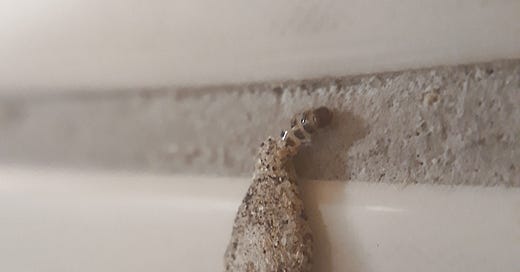


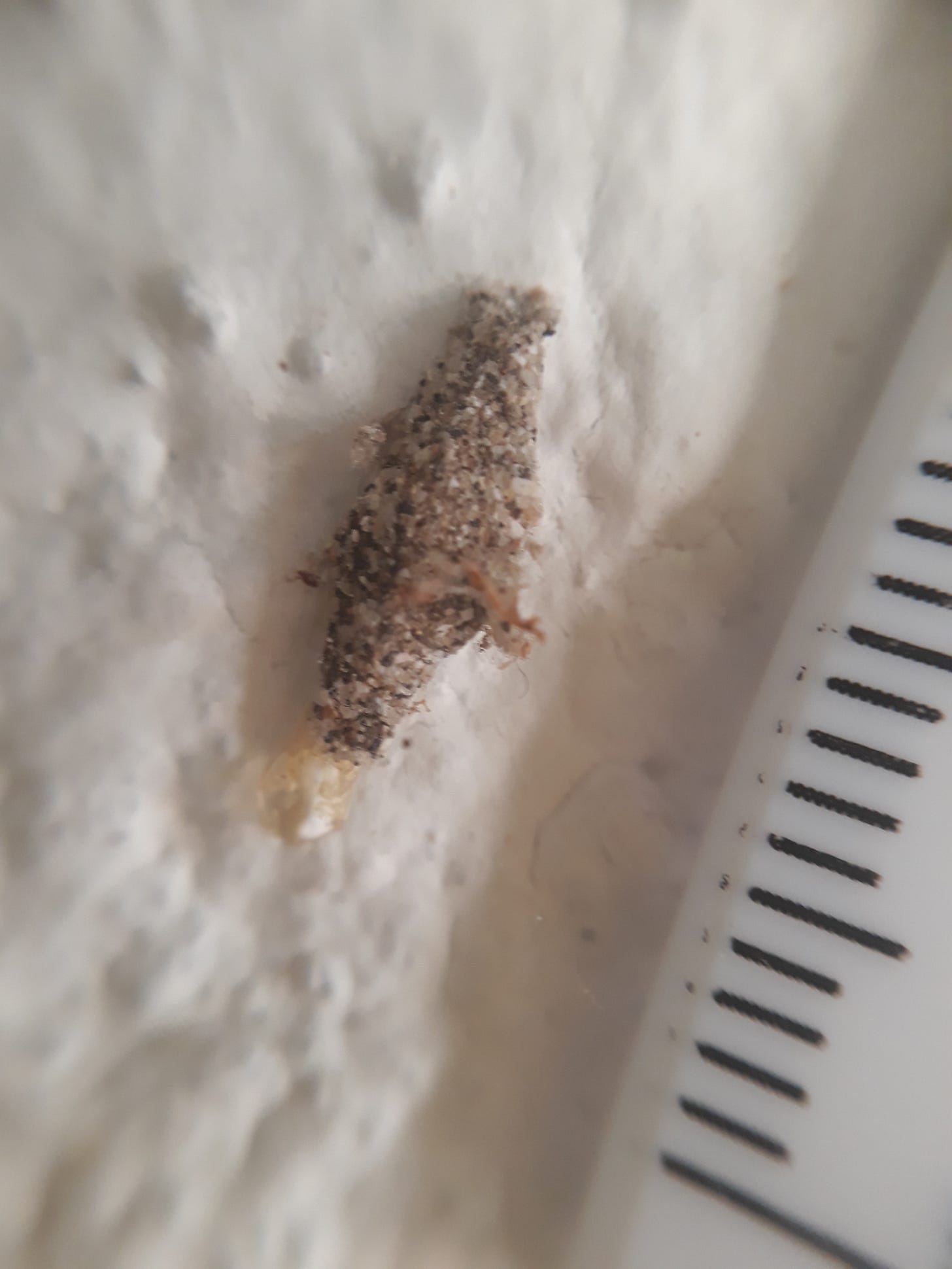
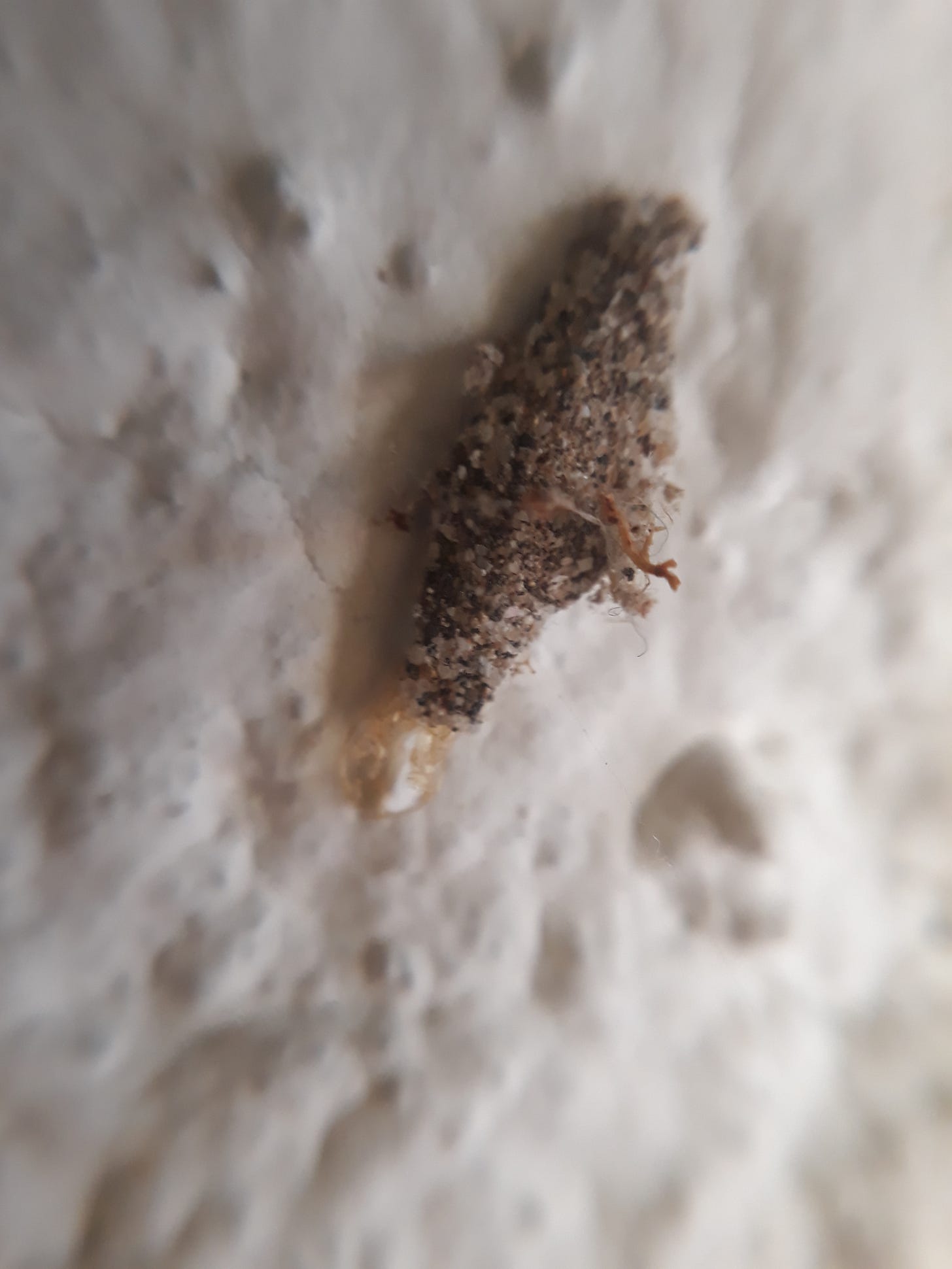
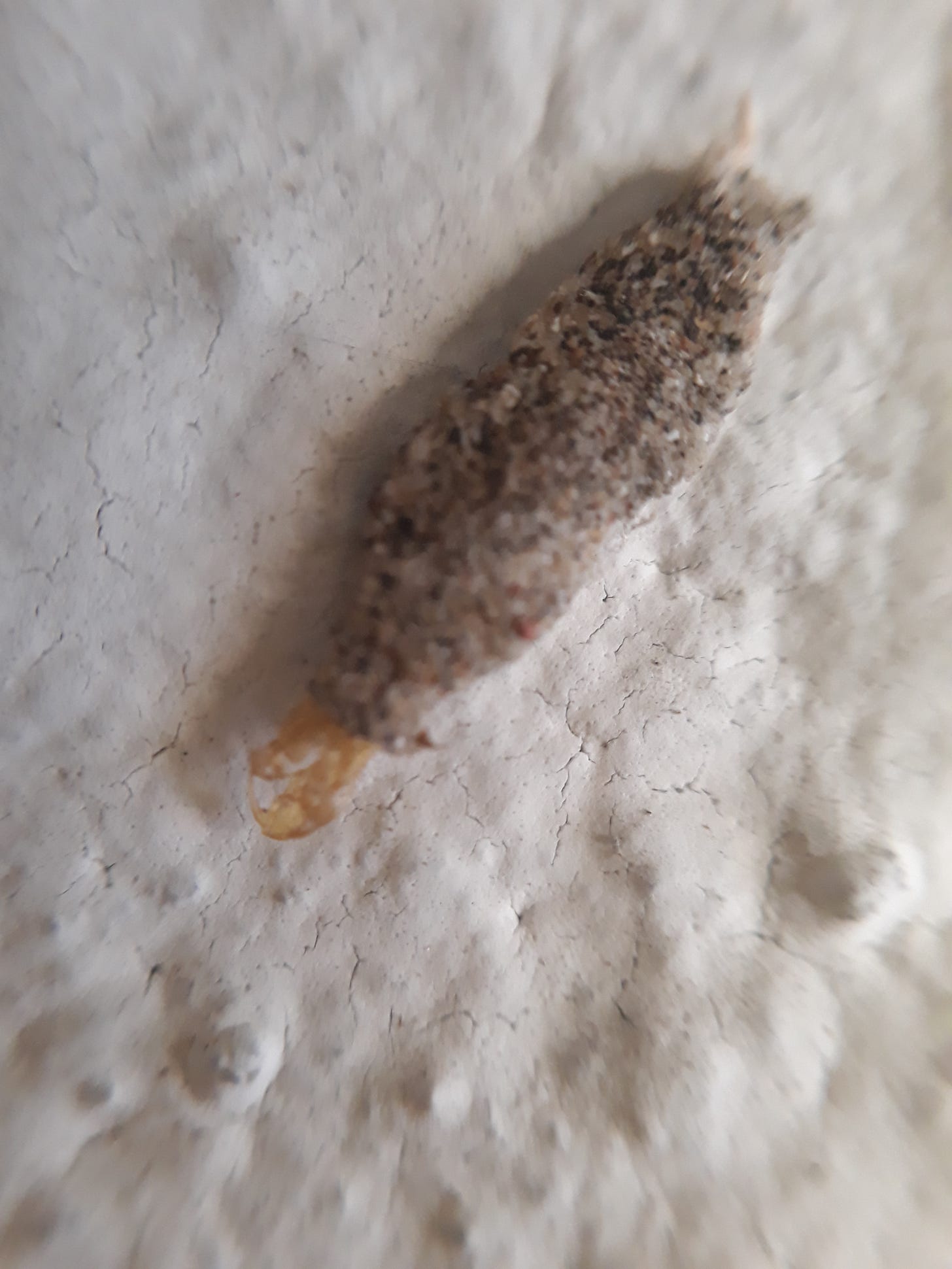

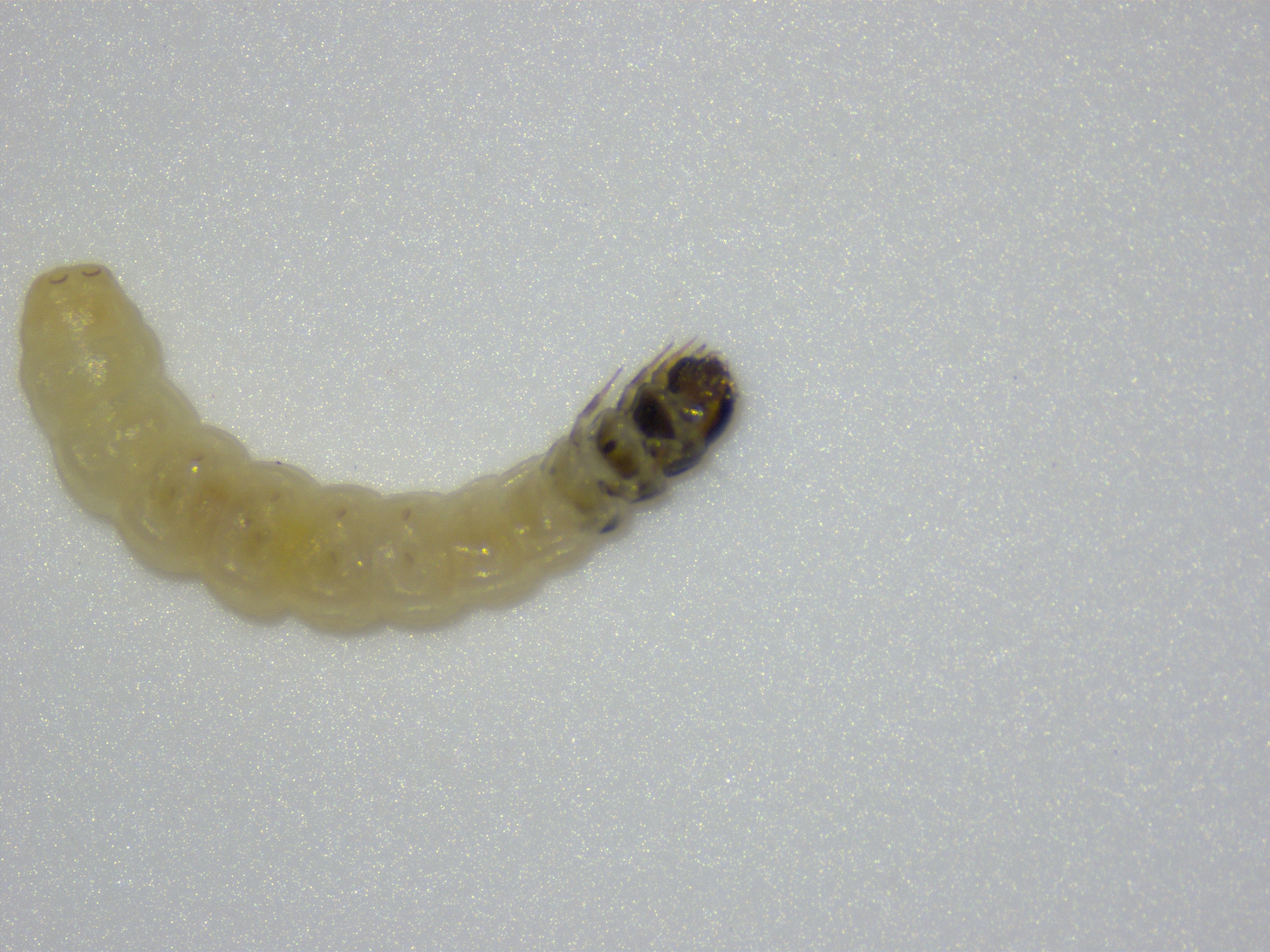
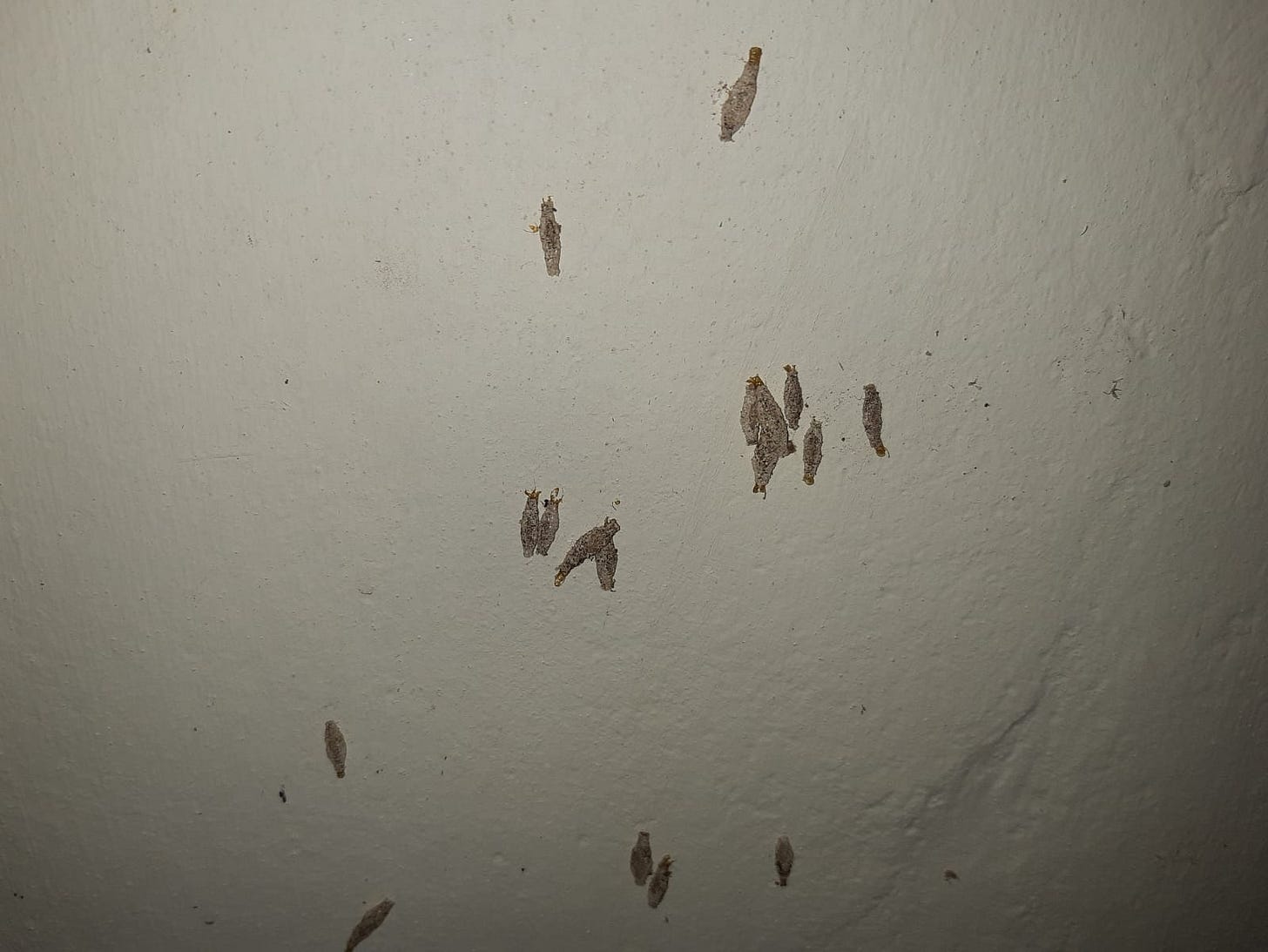
Looks a bit like carpet moth larvae.